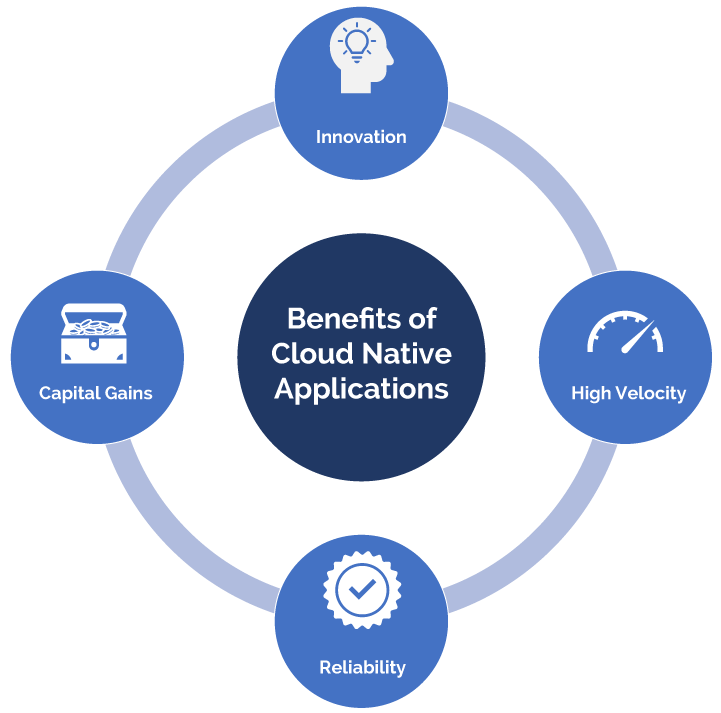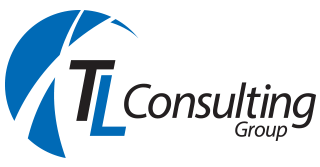Road to a Cloud Native Journey
Author: Ravi Cheetirala
Technical Architect ( Cloud & DevSecOps) at TL Consulting
“Cloud Native” is the new buzz word in the modern application development. It is an evolving application build pattern. The technology is relatively new to the market; thus, our understanding of the architecture is very primitive and keeps changing over the time with technological advancements in the cloud and containers. Understanding cloud native approach and strategy helps to build better understanding among developers, engineers, and technology leaders so that, teams can collaborate each other more effectively.
The Need for Cloud Application Modernization:
In today’s IT landscape, 70-80% of C-Executives report that their IT budgets are spent on managing the legacy applications and infrastructure – In addition to that, legacy systems consume almost 76% of the IT spend. Despite of large amount of investment on legacy applications, most businesses fail to see through their digital transformation plans to a satisfactory. On the other hand, constantly changing digital behaviours of consumers and the evolution of viable, reduced opex, self-sustaining infrastructure models that are better suited to today’s pace of technological change are the primary drivers pushing application modernization up the CIO/CTO’s list of priorities.
According to a study conducted by Google, public cloud adoption alone can reduce the IT overheads by 36-40% when migrating from traditional IT frameworks. However, application modernization can help in further reduction – it frees up the IT budget to make space for innovation and exploring new opportunities of business value. Lastly, this digital transformation brings greater agility, flexibility, and transparency while opening operations up to the benefits of modern technologies like AI, DevSecOps, intelligent automation, IoT, etc.
Kickstart to Cloud Native Journey
Beyond the upfront investments after creating a buy-in, application modernization entails several considerations to be made by the CIOs, and more importantly, a game plan to manage the massive amount of change that comes with such a large-scale transformation. However, moving away from the sunk costs of legacy IT can help enterprises take on a new trajectory of profitability and value. Here are four essential steps to a successful application modernization roadmap.
- Assessment of legacy system landscape: The first and crucial step of the application modernisation journey should be assessment of the legacy system systems. identify the business-critical systems, applications, and business processes. High-value assets that need to be modernized on priority can form the first tier of the legacy application modernization process. Next, we need to start with business value and technical impact assessments. The outcome of these assessments will drive the journey further down to the roadmap.
- Pickup your Anchor applications: Once an assessment is complete and business services are identified, team must shortlist their modernization options from their legacy application suite. This list will enable a more targeted implementation plan. Following this, an implementation framework needs to be developed and implemented, which will help you to create a modernization schedule. Assessment should also help in determining the scope of the project, team, technologies, and the skills required.
- Define the success criteria: Various application transformation approaches comprise different costs and risks involved. Say for some instances refactoring a legacy application cost much higher than rebuilding the application using a new technical stack. Most of the times organisations fail to determine the target outcomes in effective manner. So, it is very important to measure the change, costs and risks involved along with the return on investment, the features we aim to improve, and set new benchmarks of attaining agility and resilience while bringing an enhanced security and risk management strategy into the portfolio.
- Structure of target operating model: The traditional operating structure consists of network engineers, system administrators, and database engineers, are no longer fit to support to the new modern digital transformation landscape, so the organisation must align the IT landscape to suite to new suite, alongside upskilling/reskilling path – In the end, applications are ultimately maintained and supported by the people, and your end state operating model must account for ownership of microservices, who will configure and manage the production environment, etc.
Benefits of Cloud Native applications:

Drives Innovation:
With a new cloud native environment, it is easy drive the digital transformation and to adopt the new age technologies like AI/ML, automation driven insights as these are readily available in most of the cloud environments and comes with easy integration to the applications.
Ship Faster:
In current world, key to the success of any business is time to market. With the DevOps and CI/CD capabilities, it is very much a possibility to deploy changes very frequently (multiple times in day) while it takes months to deploy a change in traditional software development. Using DevOps, we can transform the software delivery pipeline using automation, building automation, test automation, or deploy automation.
Optimised Costs:
Containers manage and secure applications independently of the infrastructure that supports them. Most of the organisations use Kubernetes to manage the large volumes of containers. Kubernetes is an open-source platform that is standard for managing resources in the cloud. Cloud-native applications are using containers; hence it fully benefits from containerization. Alongside Kubernetes, there is a host of powerful cloud-native tools. This, along with an open-source model, drives down costs. Enhanced cloud-native capabilities such as Serverless let you run dynamic workloads and pay-per-use compute time in milliseconds. So, it has standardization of infrastructure and tooling. Hence, it helps to reduce cost.
Improved Reliability:
Achieving high fault tolerance is hard and expensive with the traditional applications. With modern cloud-native approaches like microservices architecture and Kubernetes in the cloud, you can more easily build applications to be fault tolerant with resiliency and autoscaling and self-healing built in.
Because of this design, even when failures happen you can easily isolate the impact of the failure, so it doesn’t take down the entire application. Instead of servers and monolithic applications, cloud-native microservices helps you achieve higher uptime and thus further improve the user experience.
Foundational elements of Cloud Native applications:
In general, cloud native applications are designed and deployed as a collection of microservices that run on containers, orchestrated in Kubernetes, and managed and deployed using DevOps and GitOps workflows.
Containers:
Container is a lightweight, standalone, executable package of software that includes everything needed to run an application: code, runtime, networking, scaling, load balancing- so it can run on any cloud platform. This allows developers to essentially create “build once, run anywhere” code — making the application ultra-portable.
Kubernetes is a container orchestration system to manage large number of containers. It abstracts the way the physical machines it is managing the workloads.
This flexibility means you can make high-impact changes frequently and predictably, with minimal effort.
Please do refer our service catalogue, for Kubernetes services and advisory
As per the recent survey by Gitlab conducted in the fall of year 2021. Please find some of the insights on DevOps, and security.
Microservices:
Traditionally, most of the applications are being built as one giant application runtime, single artifact to run on one or more servers. They’re easy to develop, manage and deploy initially, but they’re difficult to manage as they grow with the time. And, because they are built as a single runtime, breaking anything will lead to a complete application outage.
Serverless:
One of the main value propositions in the cloud computing is, not involving in managing the infrastructure, rather it is managed by the provider himself. And the “Serverless” is the main centre piece of this proposition. All the heavy lifting of operations management takes place outside of the business. This frees up your developers/operations from worrying about the servers that run their code, while delivering greater efficiency, stronger security, and bigger cost savings.
Continuous integration / continuous delivery:
Application code and required infrastructure will be written as a “infrastructure as code” are checked into version control systems such as Git, BitBucket and so on to enable the automated build, test, and deploy the changes into nonproduction and production environments.
DevOps:
DevOps is a set of practices that combines software development and IT operations. It aims to shorten the systems development life cycle and provide continuous delivery with high software quality. DevOps is the key driver to becoming cloud native, as it helps software developers and IT operations can produce software and infrastructure services rapidly, frequently and reliably by standardizing and automating processes.
GitOps:
GitOps is the new age paradigm that empowers developers to perform tasks which usually be done by the infrastructure team. GitOps dictates us to describe the tasks to be performed in a declarative way that eventually form the basis of continuous integration and continuous deployments. GitOps also leverages Kubernetes Operators or infrastructure tools to manage the state for the defined in the configuration to ensure, no drift in the configuration
What are the tools for Managing Cloud-Native Applications?
- Kubernetes – Container orchestration system to manage containers by CNCF.
- Prometheus and Grafana – Popular monitoring tool with inbuilt Time-Series data to monitor distributed Microservices.
- ELK Stack (Elastic Search, Log Stash, Kibana) – Provides complete monitoring solution.
- Google Cloud, Azure, and AWS – Public cloud providers.
- Istio – Service Mesh to ease microservice communication.
- Argo CD – Argo CD is a declarative, GitOps continuous delivery tool for Kubernetes.
Summary:
Cloud native adoption requires a mindset shift, which drives a culture and processes change for organizations in its IT landscape, and technology choices throughout the stack. You can start your modernization journey with an application modernization assessment, allowing you to become familiar with this approach before growing your cloud adoption further over time.
You’ll want to choose a partner that truly gets cloud-native computing and can help you define and drive your vision. Please review at our application modernisation service catalogue or contact us.
Information submitted on this form is subject to the company’s Privacy Policy and Terms of Use.
